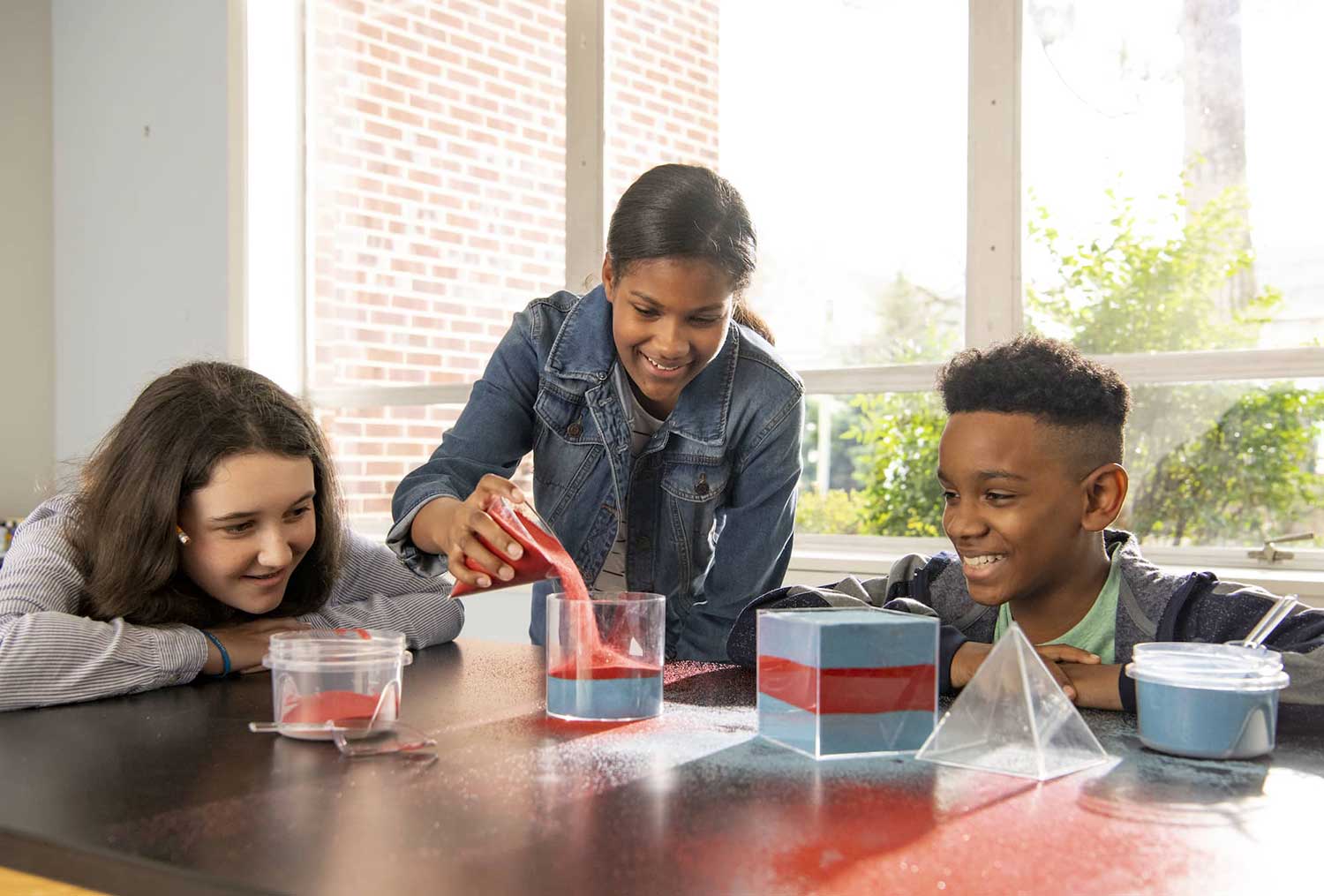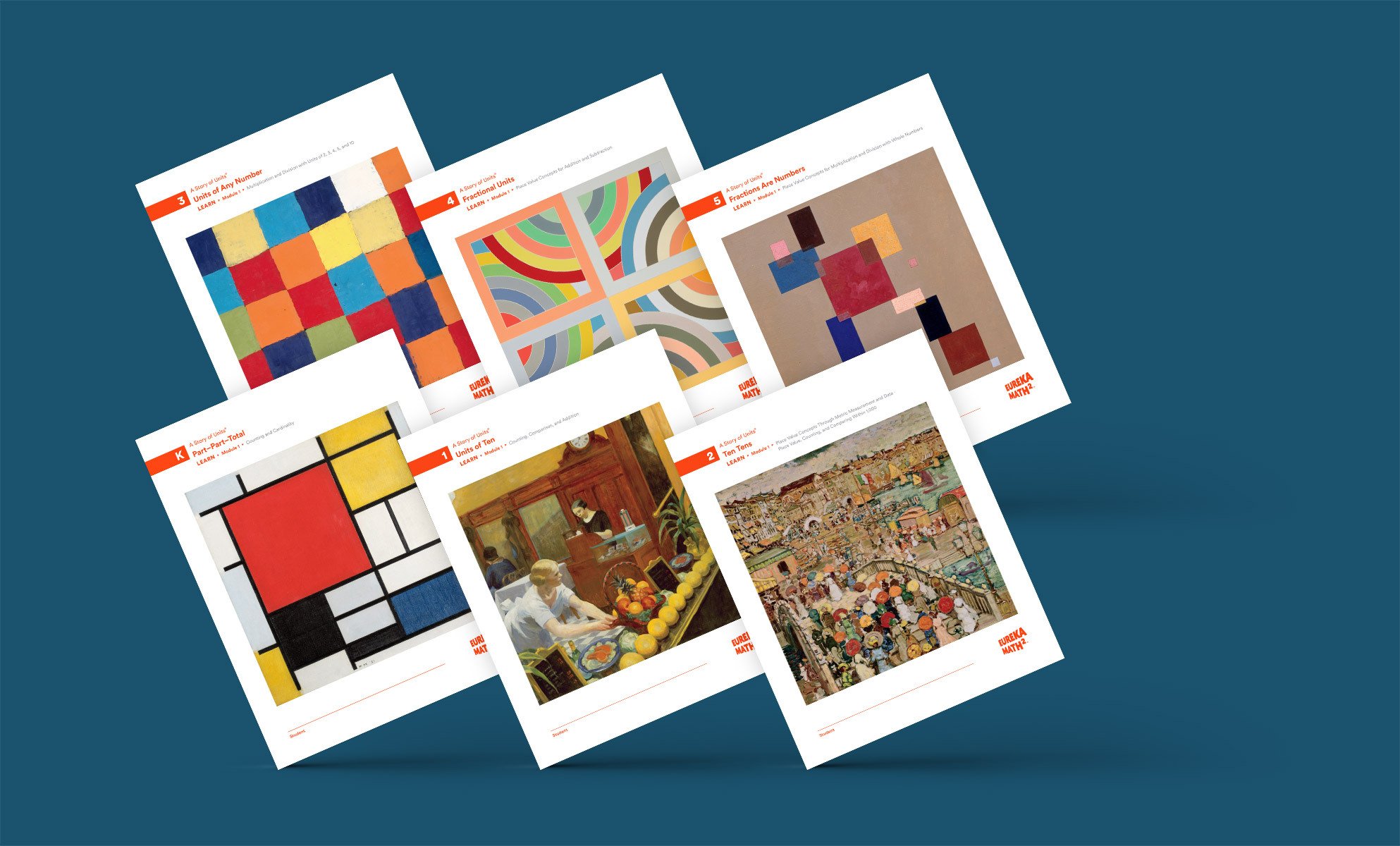Posted in: Aha! Blog > Eureka Math Blog > math > How To Support Math Students With The Universal Design For Learning Principles
How do UDL Principles Apply to the Design of the Cockpit of a Fighter Jet and a Math Lesson?
First, let’s provide a bit of context. In this popular Ted Talk video, best-selling author and Harvard professor Todd Rose tells the story of a problem the United States Air Force faced in the 1950s. Despite having good pilots and better planes, they were getting poor results. After ruling out other possible causes of declining performance, such as the pilots themselves, the technology, and the flight instructors, the air force realized that the problem was with the cockpit in its fighter jets. It didn’t fit the pilots.
The thinking behind the existing configuration was that a cockpit designed to fit the average-size pilot would accommodate most pilots. As part of the troubleshooting effort, a researcher measured 10 different body dimensions (height, shoulders, torso, etc.) of over 4,000 pilots to determine how many pilots had average measurements of all 10 dimensions. The air force discovered that no one had average measurements of all dimensions; there was no average pilot. In fact, every pilot had what they described as a “jagged size profile”—some measurements were average, some above, some below. As a result, the air force banned designing for the average, instead requiring companies that built the planes to “design to the edges” of pilots’ dimensions, ensuring that the cockpit would fit the variability of pilots’ sizes. The result was a cockpit that accommodates all pilots by providing flexible components such as adjustable seats.
Just as the air force discovered that there is no average-size pilot, neuroscience research tells us that there is no average learner. As an article by CAST, a nonprofit education research and development organization, explains, no two brains are alike (2018a). Therefore, instruction should not be designed for the “average learner.” Instead, instruction should provide flexible options—just like the adjustable seat in the cockpit of a fighter jet. CAST’s Universal Design for Learning Guidelines (2018b), help educators design instruction that proactively addresses barriers to learning by designing for the predictable variability of all learners.
Universal Design for Learning in Eureka Math2
The authors of Eureka Math2 applied the UDL Guidelines to develop lessons that provide multiple means of engagement, representation, and action and expression. Options that address learner variability are built into the lesson design and suggested at point of use in margin notes.
Why is the Universal Design for Learning Important?
UDL is a framework based on current research from cognitive neuroscience that recognizes learner variance as the norm rather than the exception. The guiding principles of the UDL framework are based on the three primary networks of the brain.
|
Brain Networks |
Guiding Principle |
|
The Affective networks |
Provide multiple means of Engagement (the why of learning) |
|
The Recognition networks |
Provide multiple means of Representation (the what of learning) |
|
The Strategic networks |
Provide multiple means of Action & Expression (the how of learning) |
 (Image Source: CAST)
(Image Source: CAST)
According to CAST, the UDL framework “offers an overarching approach to designing meaningful learning opportunities that address learner variability and suggests purposeful, proactive attention to the design of goals, assessments, methods, and materials.” (n.d.) The UDL Guidelines provide a set of concrete suggestions organized by the three guiding principles: Engagement, Representation, and Action & Expression. Educators can use the UDL Guidelines to evaluate their goals, assessments, methods, and materials and identify potential barriers to student learning. Teachers can then proactively design instruction that maintains desirable challenges and eliminates unnecessary barriers. Here is an overview of each guiding principle and its instructional implications.
- Provide Multiple Means of Engagement: Learners differ markedly in the ways in which they can be engaged or motivated to learn. Use a variety of methods to engage students. For example, provide choice, address student interest, and arrange for students to monitor their own learning, such as with goal setting, self-assessment, and reflection.
- Provide Multiple Means of Representation: Learners differ in the ways they perceive and comprehend information that is presented to them. Use a variety of strategies, instructional tools, and methods when presenting information and content.
- Provide Multiple Means of Action & Expression: Learners differ in the ways they can navigate a learning environment and express what they know. Offer students a variety of strategies and instructional tools and allow for multiple ways to demonstrate new understanding.
How do You Provide Multiple Means of Engagement in Math?
The following examples show how Eureka Math² lessons apply the UDL principle of Engagement to various lesson components.
Provide Options for Recruiting Interest
According to CAST, “individuals are engaged by information and activities that are relevant and valuable to their interests and goals.” (UDL Guidelines, Engagement, Checkpoint 7.2) In this grade 1 lesson, students collect data about their preferences and make a graph by representing each student choice with a cube on a number path. Sharing favorite activities through a class survey engages students by tapping into their interests and experiences. A margin note encourages teachers to tailor the sample questions to match student interests. Adjusting questions to make them more meaningful to students provides options for recruiting interest by personalizing and contextualizing the content to learners’ lives.
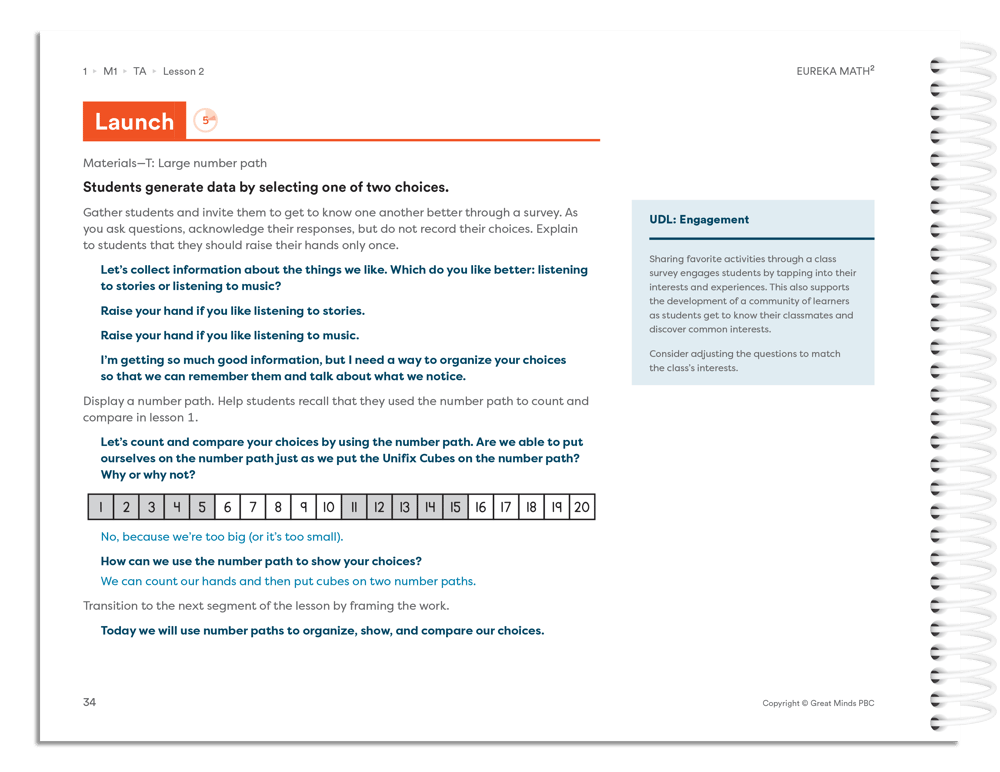
Math Research Connection
“Research supports the effectiveness of integrating students’ interests and experiences into instruction to anchor it in meaningful contexts (e.g., Gersten, 1998; Meyers et al., 2015; Wehmeyer, Palmer, & Agran, 1998). Doing so creates meaningful learning contexts for students, and meaning affects learning in several positive ways, including enhancing memory retrieval, increasing attention, and helping students with diverse backgrounds and experiences find relevance.” (Allsopp, Lovin, and van Ingen 2018, 211)
Provide Options for Sustaining Effort and Persistence
According to CAST, “feedback that orients students toward mastery and that emphasizes the role of effort and practice rather than ‘intelligence’ or inherent ‘ability’ is an important factor in guiding students toward successful long-term habits of mind.” (UDL Guidelines, Engagement, Research for Checkpoint 8.4) In this grade 7 lesson, students work on a problem with a partner by writing the expression as an equivalent addition expression and decomposing the mixed number. A margin note prompts teachers to provide feedback that focuses on students’ application of strategies as they work. Offering timely, relevant, consequential, practical feedback and asking students to explain their choices provides options for sustaining effort and persistence.

Math Research Connection
“Effective feedback does not just correct students’ mistakes. Feedback can also help students progress in their understanding, so feedback can be in the form of a question that helps a student focus on a specific idea or connection between ideas. As students explain their reasoning, you should ask questions based on the students’ reasoning rather than the ways you are thinking about the task.” (Allsopp, Lovin, and van Ingen 2018, 235)
Provide Options for Self-Regulation
According to CAST, “the ability to self-regulate … is a critical aspect of human development. While many individuals develop self-regulatory skills on their own, many others have significant difficulties in developing these skills.” (UDL Guidelines, Engagement, Guideline 9) In this grade 2 lesson, students share strategies and reason about ways they can combine addends to make an easier problem. Students make connections between the different solutions and their own work, and then they try a strategy one of their classmates used. A margin note encourages teachers to provide feedback that promotes students’ belief in themselves. Encouraging students to consider a peer’s success and connecting this to the potential for their own success provides options for self-regulation by strengthening students’ belief in their own abilities.
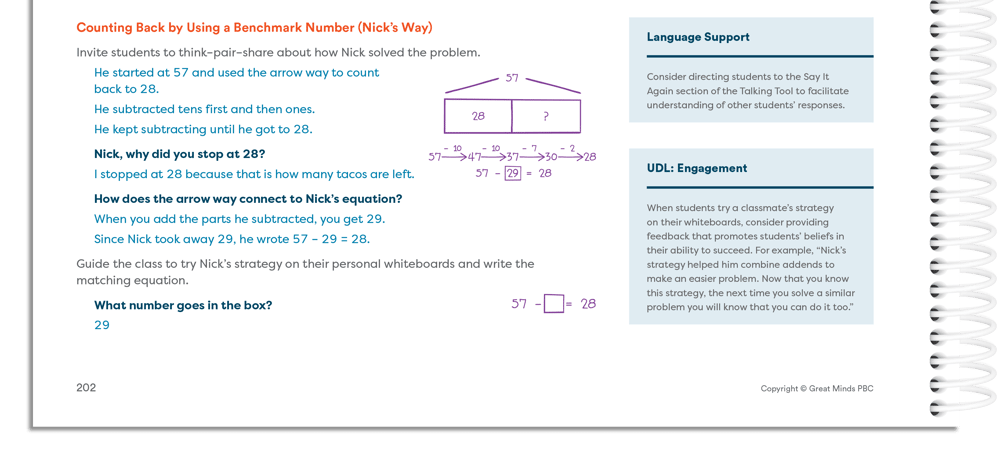
How do You Provide Multiple Means of Representation in Math?
The following examples show how Eureka Math² lessons apply the UDL principle of Representation to various lesson components.
Provide Options for Perception
According to CAST, “information conveyed solely through sound is not equally accessible to all learners and is especially inaccessible for learners with hearing disabilities, for learners who need more time to process information, or for learners who have memory difficulties… . To ensure that all learners have access to learning, options should be available for any information, including emphasis, presented aurally.” (UDL Guidelines, Representation, Checkpoint 2) In this grade 8 lesson, students factor and use the properties of exponents to simplify numerical expressions and write exponential expressions by using the fewest number of prime bases. A margin note encourages teachers to activate students’ prior knowledge of common squares and cubes. Additionally, the margin note suggests displaying the examples in a chart for student reference. Posting the chart provides options for perception by offering alternatives for auditory information and presenting the information in more than one mode.
 Provide Options for Language and Symbols
Provide Options for Language and Symbols
According to CAST, “classroom materials are often dominated by information in text. But text is a weak format for presenting many concepts and for explicating most processes. Furthermore, text is a particularly weak form of presentation for learners who have text- or language-related disabilities.” (UDL Guidelines, Representation, Checkpoint 2.5) In this example from a grade 3 lesson, students use tape diagrams to make sense of and solve word problems about liquid volume. Working with a partner, students identify what each part of the tape diagram represents. Then students discuss how the tape diagram helps them find the solution path. Presenting the text-based word problem paired with the tape diagram, which is an example of a visual representation, provides options for language and symbols by making the word problem more comprehensible. In addition, visual representations are an example of an evidence-based practice, helpful for all students, particularly students with learning disabilities.

Math Research Connection
“Schema-based instruction, in which students are explicitly and systematically taught to use visual diagrams and graphic organizers to solve word problems, has been demonstrated to help students develop and utilize cognitive schemas to problem-solve more effectively (e.g., Jitendra, George, Sood, & Price, 2010; Jitendra & Hoff, 1996).” (Allsopp, Lovin, and van Ingen 2018, 192)
Provide Options for Comprehension
According to CAST, “learning can be cognitively inaccessible when it requires the ability to select and prioritize among many elements or sources, and where there are no options for individuals who differ in that capability. One of the most effective ways to make information more accessible is to provide explicit cues or prompts that assist individuals in attending to those features that matter most while avoiding those that matter least.” (UDL Guidelines, Representation, Research for Checkpoint 3.2) In this Algebra I lesson, students use a graphic organizer to highlight the relationships associated with the addition property of inequality and the multiplication property of inequality. Throughout the lesson, students complete each section of the graphic organizer by adding examples. Graphic organizers are another example of the evidence-based practice of using visual representations (IRIS Center 2021), as they provide options for comprehension by emphasizing key ideas and relationships.

Math Research Connection
“Graphic organizers can be effectively used to help students explicitly make connections between mathematical terms and the mathematical ideas to which they relate. Graphic organizers are especially helpful for struggling learners because they provide a visual schema that helps students make associations between words and ideas in their mind’s eye. This reduces the cognitive demand on students; it is easier than making these associations abstractly without such supports.” (Allsopp, Lovin, and van Ingen 2018, 176–77)
“When teachers utilize visuals to provide students with a cognitive framework within which to attach both prior and new mathematical knowledge, they provide students a scaffolded way to build important mathematical connections.” (210)
How do You Provide Multiple Means of Action & Expression in Math?
The following examples show how Eureka Math² lessons apply the UDL principle of Representation to various lesson components.
Provide Options for Physical Action
According to CAST, “learners differ widely in their capacity to navigate their physical environment. To reduce barriers to learning that would be introduced by the motor demands of a task, provide alternative means for response, selection, and composition.” (UDL Guidelines, Action & Expression, Checkpoint 4.1) In this grade 3 lesson, students transition from concrete to pictorial representations of the break apart and distribute strategy with arrays by tracing and shading a large array on grid paper. Margin notes in this lesson suggest offering alternative materials to minimize fine motor challenges presented by tracing and shading. Teachers are encouraged to offer square-inch tiles and inch grid paper for completing the array. Offering square-inch tiles and inch grid paper provides options for physical action by suggesting alternative ways students can complete their arrays.
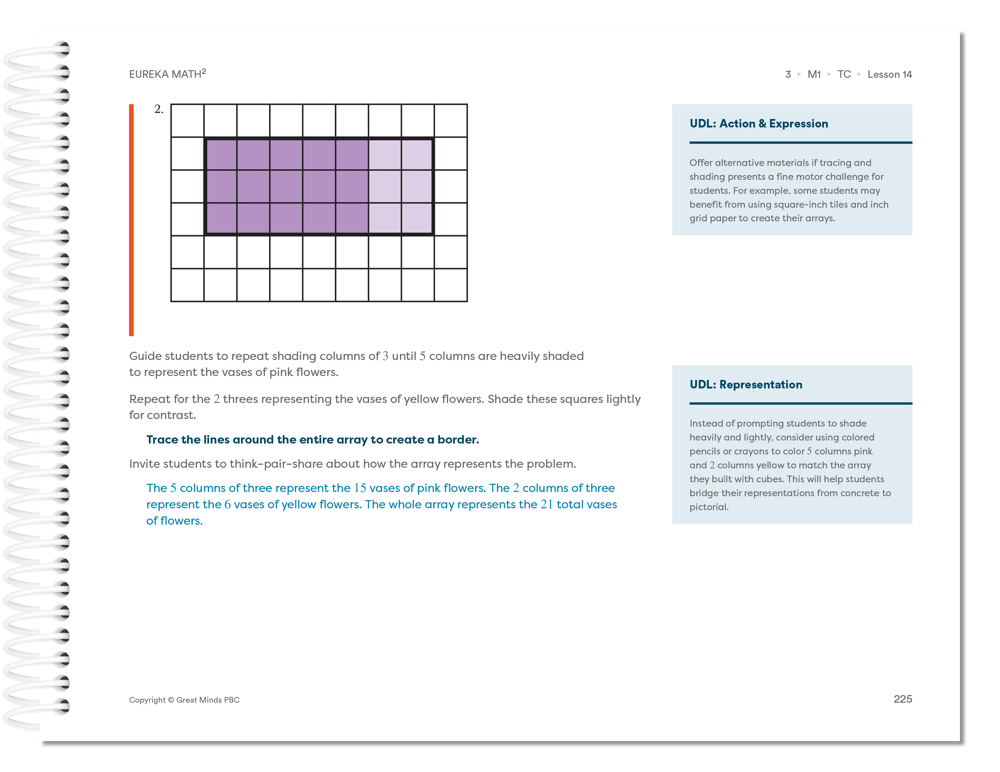
Provide Options for Expression & Communication
According to CAST, “there is a tendency in schooling to focus on traditional tools rather than contemporary ones. This tendency has several liabilities: 1) it does not prepare learners for their future; 2) it limits the range of content and teaching methods that can be implemented; 3) it restricts learners’ ability to express knowledge about content (assessment); and, most importantly, 4) it constricts the kinds of learners who can be successful. Current media tools provide a more flexible and accessible toolkit with which learners can more successfully take part in their learning and articulate what they know.” (UDL Guidelines, Action & Expression, Checkpoint 5.2) In this example from Algebra I, students study an animation of a person jumping on an in-ground trampoline and sketch a graph that models the elevation of the jumper as a function of time. Students use dynamic features of the digital platform to show key features of functions and their graphs and participate in discussions informally describing those key features. Using the digital tool provides options for expression and communication by allowing students to show what they know in a flexible and nontraditional way.
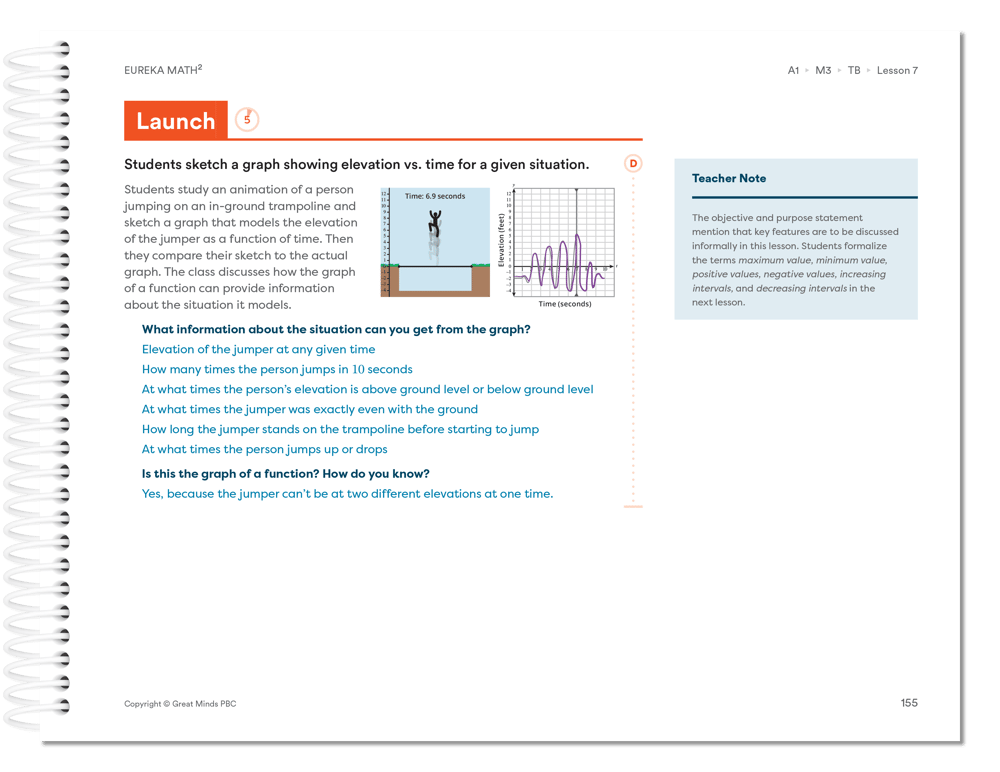
Provide Options for Executive Functions
According to CAST, “learning can be inaccessible when it requires planning and strategy development, and where there are no options for individuals who differ in such executive functions. Young children, older students in a new domain, or any student with one of the disabilities that compromise executive functions (e.g., ADHD, ADD, Autism Spectrum Disorders) often are weak at planning and strategy development and impulsive trial and error dominates their learning.” (UDL Guidelines, Action & Expression, Research for Checkpoint 6.2) In this example from a grade 5 lesson, students work with a partner to draw a model to solve a division problem involving fractions. Then the class discusses the reasonableness of their quotient. A margin note prompts teachers to provide guiding questions to support students in planning, monitoring, and evaluating their progress. The guiding questions provide options for executive functions by supporting students with planning, strategizing, and metacognitive thinking as they consider what worked well and what they may do differently next time.
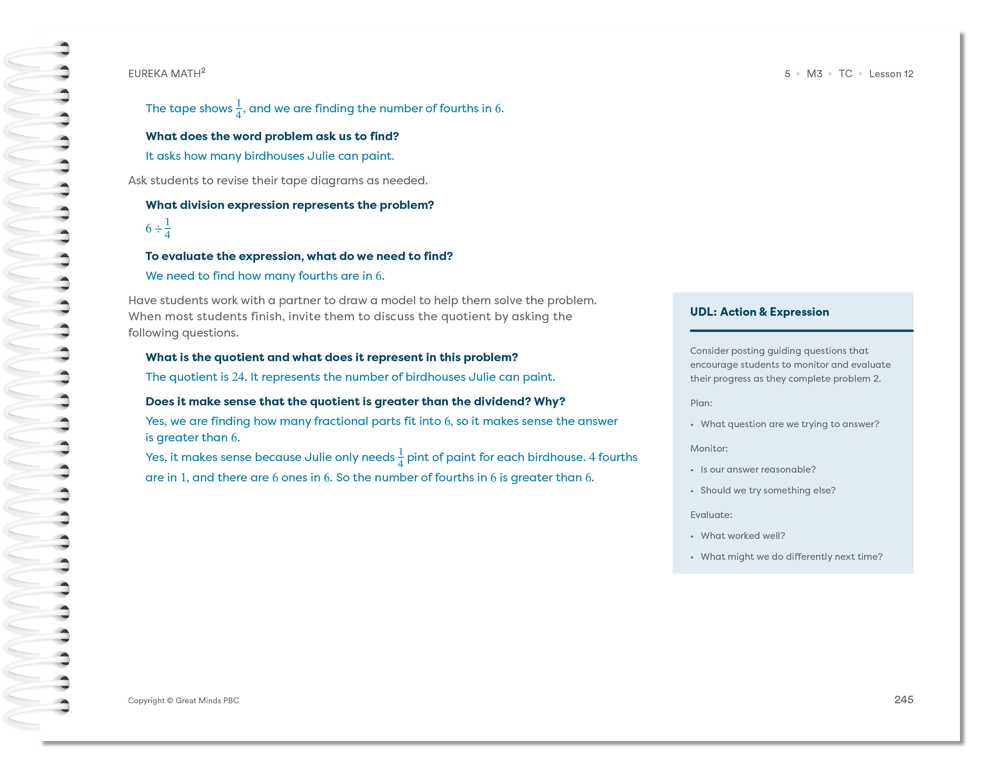
Math Research Connection
“Many students require support and guidance from their teachers to develop metacognitive awareness about mathematics. Such support may come in the form of modeling strategies for approaching and solving problems; making one’s own thinking processes transparent through thinking aloud; utilizing visuals (e.g., graphic organizers) to demonstrate how mathematics ideas connect; and providing opportunities for students to tryout problem-solving strategies in risk-free contexts, and to discuss their level of effectiveness through discourse and feedback, for the purpose of improvement.” (Allsopp, Lovin, and van Ingen 2018, 208)
What is the Importance of Universal Design for Learning in Math
So back to our original question, how is a Eureka Math² lesson like the cockpit of a fighter jet? Just as the United States Air Force provided options to address the variability of their pilots, Eureka Math² lessons provide options to address the variability of learners. Rather than designing for the illusory average student, Great Minds® prioritizes learner variability, recognizing that average is a myth and variability is the norm.
Although the concept of UDL has roots in special education, UDL is for all students. When instruction is designed to meet the needs of the widest range of learners, all students benefit. This is especially important since, according to the National Center for Learning Disabilities report The State of Learning Disabilities: Understanding the 1 in 5, “1 in 5 children in the U.S. have learning and attention issues, but only a small subset are formally identified with a disability in school … while millions of children with learning and attention issues are not formally identified.” The report recommends policy changes, one of which is to “drive innovation for effective teaching and learning.” A key aspect identified to accomplish this change is to use UDL to reach every student. As the report states, “Children with learning and attention issues are as smart as their peers and, with the right support, can achieve at high levels” (Horowitz, Rawe, and Whittaker 2017).
Learning Acceleration for All: Planning for the Next 3–5 Years, a recent report by TNTP, an education nonprofit, cautions school systems to recognize and address pitfalls that may hinder their long-term learning acceleration strategy. One of these pitfalls is “centering on the mythical “average” student rather than considering how to plan for high expectations for a diverse set of learners.” TNTP recommends that school systems work “in partnership with parents, teachers, students, and community partners to develop a comprehensive education support plan that will provide equitably high-quality academic experiences to all of [their] students.” A critical component of a high-quality academic experience for students is a high-quality curriculum that is explicitly designed to attend to the needs of all learners in its instructional design, not just the “average” learner because the average does not exist. Each student arrives to school with their own strengths, areas for growth, and approach to engaging with academic content. School systems can be confident when selecting Eureka Math² that the curriculum materials were designed to address learner variability from the outset.
Interested in learning more about designing UDL-aligned lessons? Check out these planning questions our writers used to plan for learner variability.
Allsopp, David, LouAnn Lovin, and Sarah van Ingen. 2018. Teaching Mathematics Meaningfully: Solutions for Reaching Struggling Learners (2nd ed.). Baltimore: Brookes.
CAST. n.d. Frequently Asked Questions. https://udlguidelines.cast.org/more/frequently-asked-questions.
CAST. 2018a. “UDL and the Learning Brain.” https://www.cast.org/products-services/resources/2018/udl-learning-brain-neuroscience.
CAST. 2018b. Universal Design for Learning Guidelines version 2.2. http://udlguidelines.cast.org.
Horowitz, Sheldon H., Julie Rawe, and Meghan C. Whittaker. 2017. The State of Learning Disabilities: Understanding the 1 in 5. New York: National Center for Learning Disabilities. https://ncld.org/research/state-of-learning-disabilities/.
IRIS Center. 2021. “What evidence-based mathematics practices can teachers employ?” Supporting Learning During the COVID-19 Pandemic. Vanderbilt University. https://iris.peabody.vanderbilt.edu/module/math/cresource/q2/p05/#content.
Rose, L. Todd. 2013. “The Myth of Average.” TEDTalk at TEDxSonoma County, June 13, 2013. https://www.youtube.com/watch?v=4eBmyttcfU4.
Download the Article as a Free PDF

Great Minds
Great Minds PBC is a public benefit corporation and a subsidiary of Great Minds, a nonprofit organization. A group of education leaders founded Great Minds® in 2007 to advocate for a more content-rich, comprehensive education for all children. In pursuit of that mission, Great Minds brings together teachers and scholars to create exemplary instructional materials that provide joyful rigor to learning, spark and reward curiosity, and impart knowledge with equal parts delight.
Topics: math



